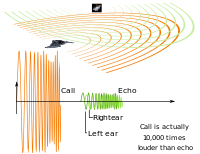
Photo from wikipedia
Abstract De-noising the magnetotelluric (MT) data using the conventional time-series editing methods is at the risk of losing low-frequency signals, especially the signal below 1 Hz. To overcome this deficiency, we… Click to show full abstract
Abstract De-noising the magnetotelluric (MT) data using the conventional time-series editing methods is at the risk of losing low-frequency signals, especially the signal below 1 Hz. To overcome this deficiency, we propose a combinatorial method based on sparse representation and mathematical morphology filtering. First, the effective low-frequency signal is reconstructed using the mathematical morphological filtering (MMF) method and protected. Then, the residual noisy signal of high frequency is sparsely decomposed using the subspace pursuit (SP) algorithm to obtain noise-free high-frequency MT signals. Finally, the effective low-frequency signal is added to the de-noised high-frequency signal to get the full-band MT data. We evaluate the proposed method using a synthetic data set and two real data sets collected in Qiadam Basin, the northeastern part of the Tibetan Plateau. Experimental results demonstrate that the presented approach can be used to remove different kinds of cultural noises while preserve the low-frequency signal below 1 Hz. The evaluation results also indicate that the proposed method is superior to the conventional methods in terms of the signal-to-noise ratio (SNR), reconstruction error (E) and normalized cross-correlation (NCC).
Journal Title: Journal of Applied Geophysics
Year Published: 2020
Link to full text (if available)
Share on Social Media: Sign Up to like & get
recommendations!